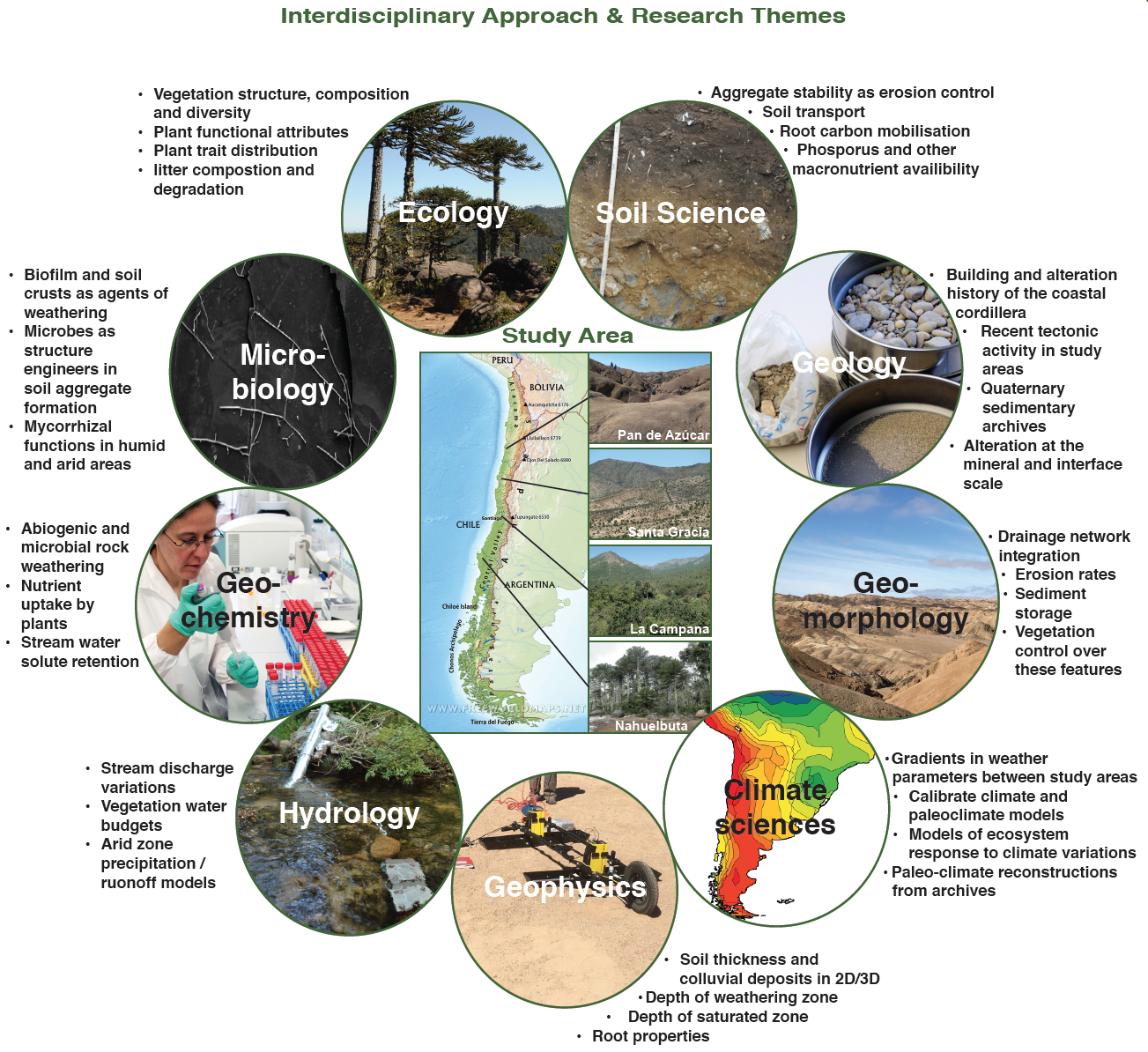

What is EarthShape?
The overarching research question of this project is how microorganisms, animals, and plants influence the shape and development of the Earth’s surface over time scales from the present-day to the distant geologic past.
EarthShape bridges between scientific disciplines and includes geoscientists and biologists to study this complex question from different viewpoints. Approximately 60 German and 20 Chilean researchers are involved in a diverse range of projects of this priority program.
All study sites are located in the north-to-south trending Coastal Cordillera mountains of Chile, South America. These sites span from the Atacama Desert in the north to the Araucaria forests approximately 1300 km to the south. The site selection contains a large ecological and climate gradient ranging from very dry to humid climate conditions. The sites were selected to avoid other complicating factors such as differences in rock type, and glacial, and volcanic impacts.
EarthShape is a 6-year priority program that started in 2016 and is funded through the German Science Foundation (DFG-SPP 1803).
You find our EarthShape Movies and supplements on Youtube (en, es, de)
direct link to the english version:
For viewing the image below, showing the involved disciplines - please click on the preview below.
| News & Press |
|---|
|
7 February 2023
New EarthShape Movie(s): A rock murder Mystery
Latest EarthShape publications:
28 January 2023. van den Brink, L. et al., No home-field advantage in litter decomposition from the desert to temperate forest. Funct Ecol. Accepted Author Manuscript
12 January 2023. Maher, K., and von Blanckenburg, F., The circular nutrient economy of terrestrial ecosystems and the consequences for rock weathering
22 December 2022. Grigusova et al., Higher sediment redistribution rates related to burrowing animals than previously assumed as revealed by time-of-flight-based monitoring
24 November 2022. Maestre, F. T. et al., Grazing and ecosystem service delivery in global drylands
17 - 22 September, 2022
Final EarthShape consortium meeting, group picture
EarthShape Movies on Youtube (2019)
Follow us on Twitter (#earth_shape):

